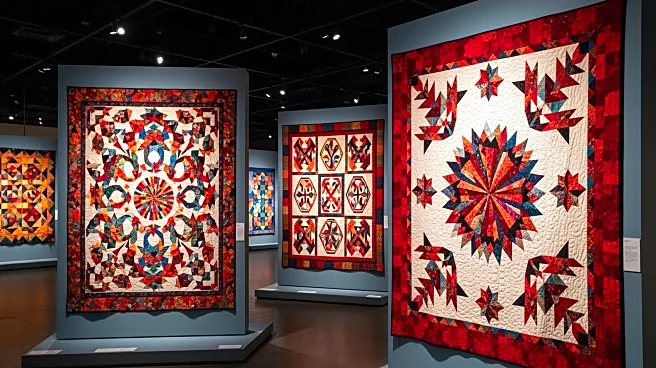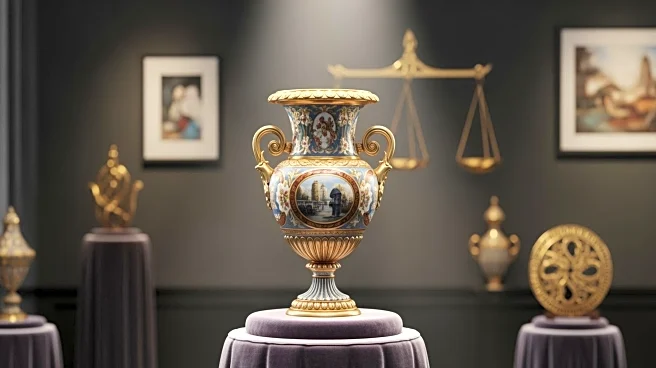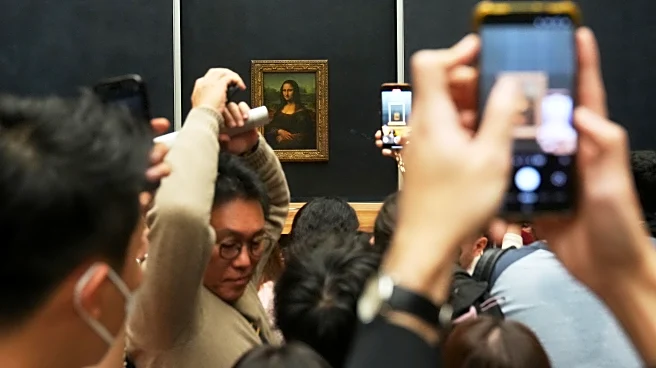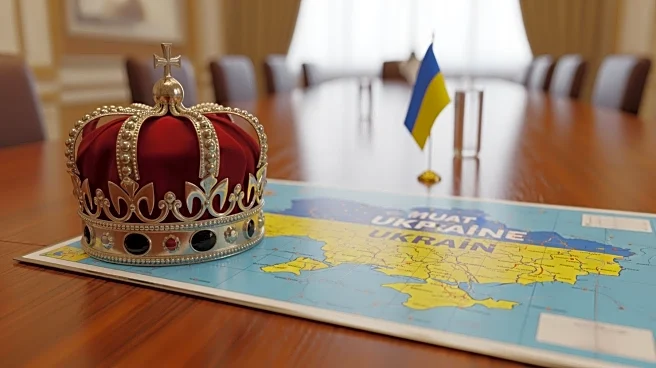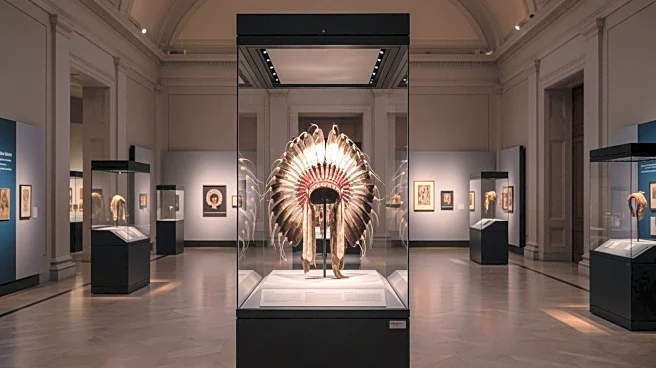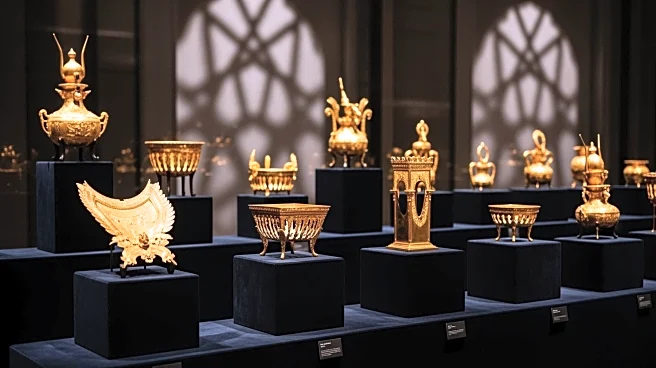What's Happening?
A forgotten painting by artist Margaret Lindsey Williams, depicting an injured soldier, inspired nurse Pam Enani's career at Cardiff Royal Infirmary. The painting, titled 'The Care of Wounded Soldiers,'
was unveiled in 1924 and hung at the infirmary for over 80 years. It was commissioned by Sir William James Thomas and features several historical figures, including matron Montgomery Wilson and private BJ Davies. Pam Enani, who worked at the infirmary in the 1970s, was inspired by the painting and the story of Mary Jones, a patient depicted in it. The painting was later discovered in a chapel building after the infirmary's closure in 1999 and restored by Sandhurst, where it now hangs.
Why It's Important?
The painting serves as a historical artifact, highlighting the contributions of Welsh troops during World War One and the legacy of healthcare improvements in Cardiff. It underscores the impact of art in preserving history and inspiring future generations. The restoration and relocation of the painting to Sandhurst reflect efforts to preserve cultural heritage and honor the sacrifices made during the war. The story of Pam Enani's career, influenced by the painting, illustrates the profound effect of historical art on personal and professional development.
What's Next?
The painting's presence at Sandhurst continues to educate and inspire visitors about the history of Welsh troops and the role of art in documenting wartime experiences. Further research into the individuals depicted in the painting may provide additional insights into their contributions and stories. The legacy of Margaret Lindsey Williams as an artist and her influence on figures like King Charles may lead to renewed interest in her work and its historical significance.
Beyond the Headlines
The painting's journey from Cardiff Royal Infirmary to Sandhurst highlights the challenges of preserving historical art and the importance of maintaining cultural heritage. The story of its restoration and the efforts to uncover its history reflect broader themes of memory, identity, and the role of art in shaping societal narratives. The painting's depiction of wartime medical care also raises ethical considerations about the portrayal of suffering and the responsibilities of artists in documenting historical events.



